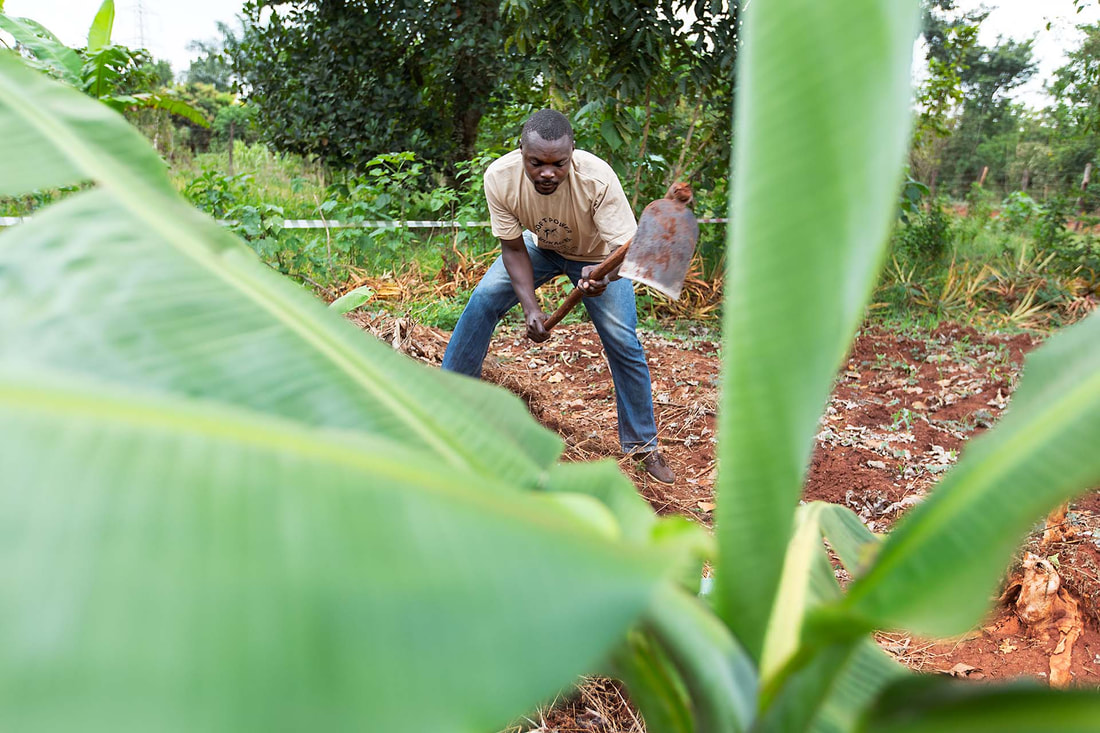Development In Gardening
In 2008, SPH partnered with Development in Gardening (DIG) establishing an organic garden adjacent to the clinic.
Expanding on DIG’s method of enabling vulnerable and HIV-affected communities to grow their own food and sell excess for income generation, SPH brought the DIG model to the many impoverished locals who lack education about organic agriculture and nutrition, helping them to meet their own needs, and improving their well-being through nutritionally-balanced and sustainable agriculture.
Trained by DIG, Patrick Kayima is the SPH head gardener and instructor in the local community. Patrick and his crew train individuals and small cooperatives how to set up gardens - growing food for themselves and how to raise surplus vegetables for sale at markets leading to a financially stable future. This financial benefit is especially important to single mothers who may otherwise lack the ability to support themselves and their children.
The DIG home garden at the clinic is used as a demonstration garden as well as a source of food for the lunchtime meal for staff, and finally as a food supply for desperate patients in need. Excess produce is sold to generate income as well.
Expanding on DIG’s method of enabling vulnerable and HIV-affected communities to grow their own food and sell excess for income generation, SPH brought the DIG model to the many impoverished locals who lack education about organic agriculture and nutrition, helping them to meet their own needs, and improving their well-being through nutritionally-balanced and sustainable agriculture.
Trained by DIG, Patrick Kayima is the SPH head gardener and instructor in the local community. Patrick and his crew train individuals and small cooperatives how to set up gardens - growing food for themselves and how to raise surplus vegetables for sale at markets leading to a financially stable future. This financial benefit is especially important to single mothers who may otherwise lack the ability to support themselves and their children.
The DIG home garden at the clinic is used as a demonstration garden as well as a source of food for the lunchtime meal for staff, and finally as a food supply for desperate patients in need. Excess produce is sold to generate income as well.


